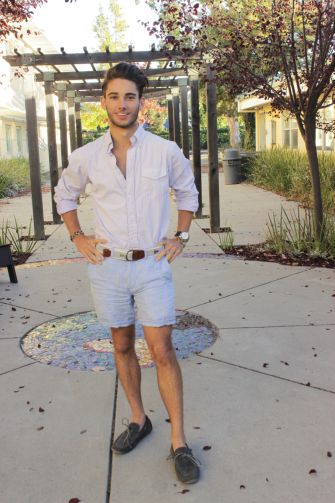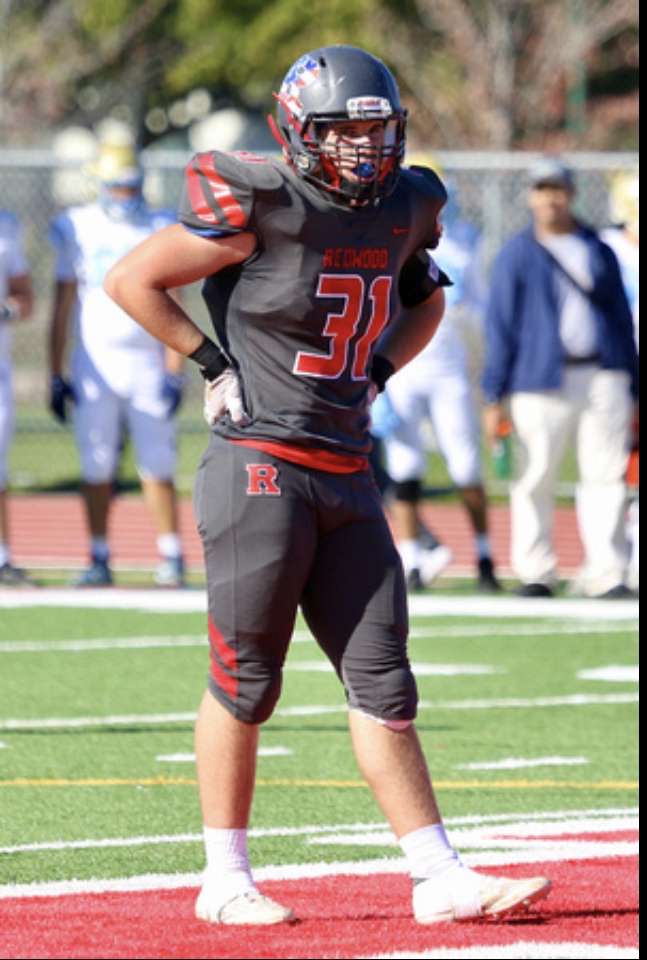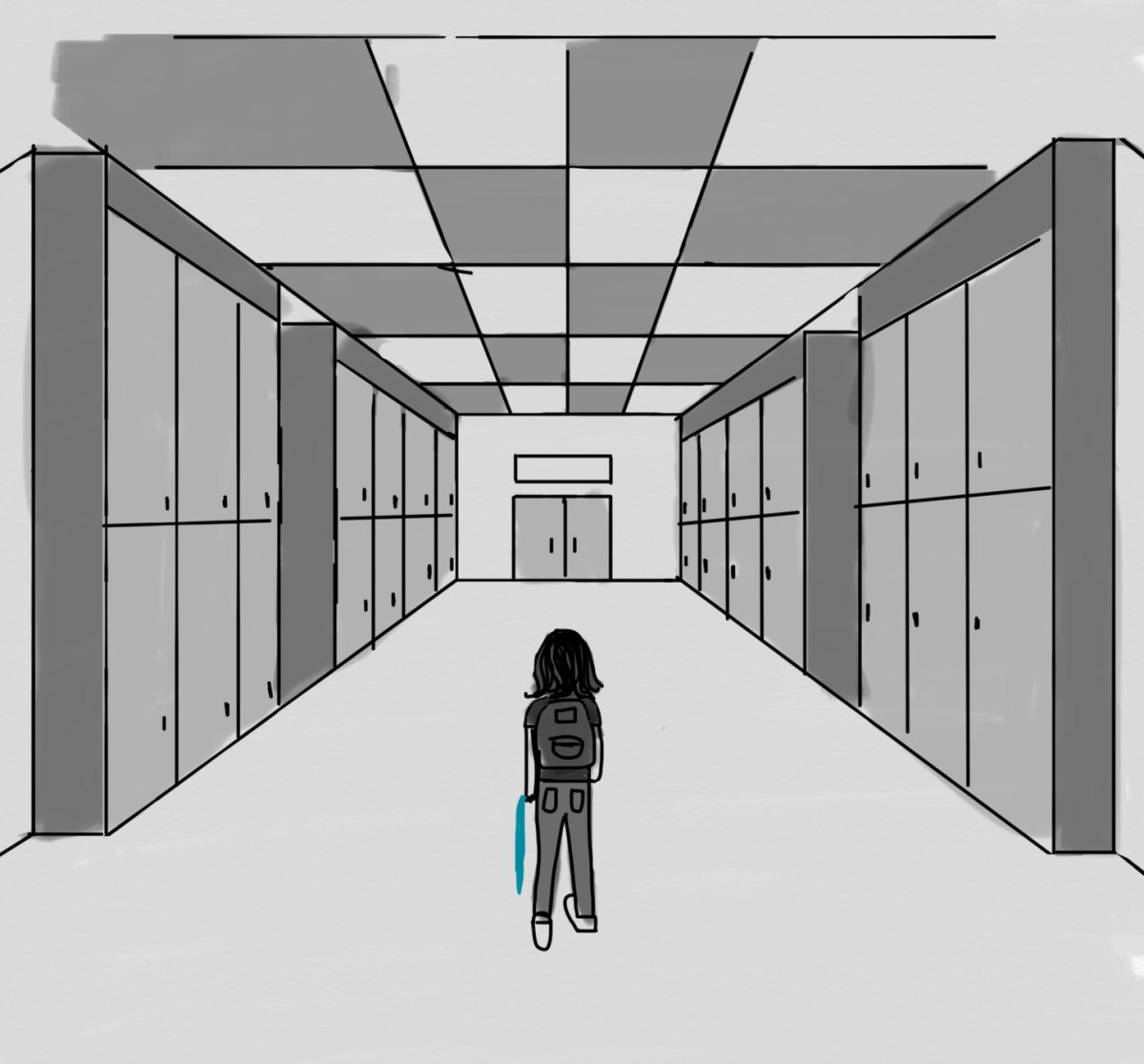Conformity, the act of changing how you dress or behave in hopes to fit in with the people around you, has always been perceived as a large part of high school culture. High school is often portrayed, in TV and in books, as a breeding ground for conformists and “wanna-be’s.” Kids grow up watching the Pink Ladies in Greece and the popular girls from Mean Girls take center stage, and can only assume that once they get to high school it will be the same way.
And indeed a September 2015 Bark survey shows that 65 percent of the student body claims to have changed their style when they entered high school. This, however, does not directly translate into peer pressure. Since starting their high school career, 57 percent of students occasionally feel pressure to fit in, while 22 percent claim they have never felt that pressure. Less than 5 percent of students say they always feel the pressure to fit in.

Sophomore Cece Kurnik remembers coming into freshman year looking to become friends with people who radiated confidence and surrounded themselves with large friend groups.
“You see what people are wearing and how people interact with each other and so sometimes you take that as a kind of advice. You are trying to connect with people so you might start acting the way they do in order to form connections with people, whether it is the way you act or not,” Kurnik said.
Unlike the pressured conformity shown in the movies, Bay Area Community Resources counselor Julia Vander Vennet believes that transitions, like the ones high schoolers often go through, are a natural part of development in adolescents.
“Part of being a teenager is figuring out who you are in comparison to the people around you and separating yourself from your parents. So that means you’re developing who you are in every way: emotionally, behaviorally, academically, and physically,” Vander Vennet said.
Kurnik has seen a large difference her sophomore year compared to the more prominent conformist culture freshman year.
“Personally, I know who I am more,” Kurnik said. “I know more about how you make friends and how you really connect with people without trying to be somebody that you aren’t.”
Sometimes this form of self-acceptance comes with acknowledging a stereotype and finding the beauty within it. Senior Kahlil Lalji transferred to Redwood from the East Coast for his junior year. Ever since his move here, he knew he stood out.
“I saw that I was definitely different but I didn’t feel any pressure to change, just because that’s not who I am,” Lalji said.
According to Lalji, his confidence has largely influenced who he is today. He suggests that if someone is confident they should go for it and show who they are, by expressing themselves however they want to.
According to Vander Vennet, the periods in a teenagers’ life, often referred to as “phrases,” are perfect examples of what high school conformist culture really narrows down to.
“Maybe they tried that out and they are like, ‘Oh, that’s not really me,’ or ‘That doesn’t really work with me or fit into who I think I am.’ But they tried it out, right?” Vander Vennet said.
According to Lalji, these phases in his adolescent years led him to become the person he is today. Though it took a couple of tries to find a lasting look, this one, he said, is here for good.
In middle school, Lalji could be spotted in a pair of basketball shorts and lacrosse jacket, sporting his name and number. It wasn’t until the seventh grade when he felt a sudden urge to change. He gradually began to adjust his wardrobe, and it later evolved into what it is today.
Kurnik, unlike Lalji, said that though she could not remember going through any significant stylistic phases, but she admits to shifting in the social realm.
“I’ve gone through phases of definitely being more confident than other times in my life. And then times in my life where I’ve had different friend dynamics where I’ve had just a couple really good friends, or just had friends in lots of different groups that I didn’t really fit in when I was younger,” Kurnik said.
According to Kurnik, finding friends in the past couple years with similar interests has helped her find herself and guide her into becoming the person she is today.
“[Acquiring these friends] made me feel like I could be myself,” Kurnik said.
For Lalji, his style symbolizes more than just self expression. It reflects his aspirations for his career and goals later down the road.
Vander Vennet said that she believes much of the conformist culture seen in teenagers is more inspired by our community, rather than students. Being a product of such a high-achieving environment impacts students to act and dress, similar to the adult culture seen in Marin.
“With that type of environment I think there is a pressure for kids to follow in the footsteps of being really successful, getting really good jobs, going to really good schools, and looking really nice, because that’s the presentation that is put forward by a lot of people in our community,” Vander Vennet said.























